We use cookies to make your experience better.
To comply with the new e-Privacy directive, you agree to the privacy policy and our use of cookies.
Intel Xeon 4110 processor 2.1 GHz 11 MB L3
SKU
CD8067303561400
£903.90
In stock
Intel® Xeon® Silver 4110 Processor (11M Cache, 2.10 GHz)
Category: Processors
| Processor socket | LGA 3647 (Socket P) |
|---|---|
| Box | No |
| Processor cores | 8 |
| Processor family | Intel Xeon Silver |
| EAN | 8592978101350 |
| Manufacturer | Intel |
| Availability | Y |
| Product Family | Xeon |
Intel® Trusted Execution Technology
Intel® Trusted Execution Technology for safer computing is a versatile set of hardware extensions to Intel® processors and chipsets that enhance the digital office platform with security capabilities such as measured launch and protected execution. It enables an environment where applications can run within their own space, protected from all other software on the system.
Intel® Virtualization Technology for Directed I/O (VT-d)
Intel® Virtualization Technology for Directed I/O (VT-d) continues from the existing support for IA-32 (VT-x) and Itanium® processor (VT-i) virtualization adding new support for I/O-device virtualization. Intel VT-d can help end users improve security and reliability of the systems and also improve performance of I/O devices in virtualized environments.
Intel® Virtualization Technology (VT-x)
Intel® Virtualization Technology (VT-x) allows one hardware platform to function as multiple “virtual” platforms. It offers improved manageability by limiting downtime and maintaining productivity by isolating computing activities into separate partitions.
Intel® 64
Intel® 64 architecture delivers 64-bit computing on server, workstation, desktop and mobile platforms when combined with supporting software.¹ Intel 64 architecture improves performance by allowing systems to address more than 4 GB of both virtual and physical memory.
Cache
CPU Cache is an area of fast memory located on the processor. Intel® Smart Cache refers to the architecture that allows all cores to dynamically share access to the last level cache.
Intel® AES New Instructions
Intel® AES New Instructions (Intel® AES-NI) are a set of instructions that enable fast and secure data encryption and decryption. AES-NI are valuable for a wide range of cryptographic applications, for example: applications that perform bulk encryption/decryption, authentication, random number generation, and authenticated encryption.
Intel® Turbo Boost Technology
Intel® Turbo Boost Technology dynamically increases the processor's frequency as needed by taking advantage of thermal and power headroom to give you a burst of speed when you need it, and increased energy efficiency when you don’t.
Max Turbo Frequency
Max Turbo Frequency is the maximum single-core frequency at which the processor is capable of operating using Intel® Turbo Boost Technology and, if present, Intel® Turbo Boost Max Technology 3.0 and Intel® Thermal Velocity Boost. Frequency is typically measured in gigahertz (GHz), or billion cycles per second.
Execute Disable Bit
Execute Disable Bit is a hardware-based security feature that can reduce exposure to viruses and malicious-code attacks and prevent harmful software from executing and propagating on the server or network.
Intel® Hyper-Threading Technology
Intel® Hyper-Threading Technology (Intel® HT Technology) delivers two processing threads per physical core. Highly threaded applications can get more work done in parallel, completing tasks sooner.
Intel vPro® Platform Eligibility
The Intel vPro® platform is a set of hardware and technologies used to build business computing endpoints with premium performance, built-in security, modern manageability and platform stability.
Intel® VT-x with Extended Page Tables (EPT)
Intel® VT-x with Extended Page Tables (EPT), also known as Second Level Address Translation (SLAT), provides acceleration for memory intensive virtualized applications. Extended Page Tables in Intel® Virtualization Technology platforms reduces the memory and power overhead costs and increases battery life through hardware optimization of page table management.
Intel® Optane™ Memory Supported
Intel® Optane™ memory is a revolutionary new class of non-volatile memory that sits in between system memory and storage to accelerate system performance and responsiveness. When combined with the Intel® Rapid Storage Technology Driver, it seamlessly manages multiple tiers of storage while presenting one virtual drive to the OS, ensuring that data frequently used resides on the fastest tier of storage. Intel® Optane™ memory requires specific hardware and software configuration.
Enhanced Intel SpeedStep® Technology
Enhanced Intel SpeedStep® Technology is an advanced means of enabling high performance while meeting the power-conservation needs of mobile systems. Conventional Intel SpeedStep® Technology switches both voltage and frequency in tandem between high and low levels in response to processor load. Enhanced Intel SpeedStep® Technology builds upon that architecture using design strategies such as Separation between Voltage and Frequency Changes, and Clock Partitioning and Recovery.
Intel® Speed Shift Technology
Intel® Speed Shift Technology uses hardware-controlled P-states to deliver dramatically quicker responsiveness with single-threaded, transient (short duration) workloads, such as web browsing, by allowing the processor to more quickly select its best operating frequency and voltage for optimal performance and power efficiency.
Instruction Set Extensions
Instruction Set Extensions are additional instructions which can increase performance when the same operations are performed on multiple data objects. These can include SSE (Streaming SIMD Extensions) and AVX (Advanced Vector Extensions).
Intel® Turbo Boost Max Technology 3.0
Intel® Turbo Boost Max Technology 3.0 identifies the best performing core(s) on a processor and provides increased performance on those cores through increasing frequency as needed by taking advantage of power and thermal headroom.
Max # of UPI Links
Intel® Ultra Path Interconnect (UPI) links are a high speed, point-to-point interconnect bus between the processors, delivering increased bandwidth and performance over Intel® QPI.
# of AVX-512 FMA Units
Intel® Advanced Vector Extensions 512 (AVX-512), new instruction set extensions, delivering ultra-wide (512-bit) vector operations capabilities, with up to 2 FMAs (Fused Multiply Add instructions), to accelerate performance for your most demanding computational tasks.
Intel® Volume Management Device (VMD)
Intel® Volume Management Device (VMD) provides a common, robust method of hot plug and LED management for NVMe-based solid state drives.
Mode-based Execute Control (MBEC)
Mode-based Execute Control can more reliably verify and enforce the integrity of kernel level code.
Intel® Transactional Synchronization Extensions
Intel® Transactional Synchronization Extensions (Intel® TSX) are a set of instructions that add hardware transactional memory support to improve performance of multi-threaded software.
Intel® Trusted Execution Technology for safer computing is a versatile set of hardware extensions to Intel® processors and chipsets that enhance the digital office platform with security capabilities such as measured launch and protected execution. It enables an environment where applications can run within their own space, protected from all other software on the system.
Intel® Virtualization Technology for Directed I/O (VT-d)
Intel® Virtualization Technology for Directed I/O (VT-d) continues from the existing support for IA-32 (VT-x) and Itanium® processor (VT-i) virtualization adding new support for I/O-device virtualization. Intel VT-d can help end users improve security and reliability of the systems and also improve performance of I/O devices in virtualized environments.
Intel® Virtualization Technology (VT-x)
Intel® Virtualization Technology (VT-x) allows one hardware platform to function as multiple “virtual” platforms. It offers improved manageability by limiting downtime and maintaining productivity by isolating computing activities into separate partitions.
Intel® 64
Intel® 64 architecture delivers 64-bit computing on server, workstation, desktop and mobile platforms when combined with supporting software.¹ Intel 64 architecture improves performance by allowing systems to address more than 4 GB of both virtual and physical memory.
Cache
CPU Cache is an area of fast memory located on the processor. Intel® Smart Cache refers to the architecture that allows all cores to dynamically share access to the last level cache.
Intel® AES New Instructions
Intel® AES New Instructions (Intel® AES-NI) are a set of instructions that enable fast and secure data encryption and decryption. AES-NI are valuable for a wide range of cryptographic applications, for example: applications that perform bulk encryption/decryption, authentication, random number generation, and authenticated encryption.
Intel® Turbo Boost Technology
Intel® Turbo Boost Technology dynamically increases the processor's frequency as needed by taking advantage of thermal and power headroom to give you a burst of speed when you need it, and increased energy efficiency when you don’t.
Max Turbo Frequency
Max Turbo Frequency is the maximum single-core frequency at which the processor is capable of operating using Intel® Turbo Boost Technology and, if present, Intel® Turbo Boost Max Technology 3.0 and Intel® Thermal Velocity Boost. Frequency is typically measured in gigahertz (GHz), or billion cycles per second.
Execute Disable Bit
Execute Disable Bit is a hardware-based security feature that can reduce exposure to viruses and malicious-code attacks and prevent harmful software from executing and propagating on the server or network.
Intel® Hyper-Threading Technology
Intel® Hyper-Threading Technology (Intel® HT Technology) delivers two processing threads per physical core. Highly threaded applications can get more work done in parallel, completing tasks sooner.
Intel vPro® Platform Eligibility
The Intel vPro® platform is a set of hardware and technologies used to build business computing endpoints with premium performance, built-in security, modern manageability and platform stability.
Intel® VT-x with Extended Page Tables (EPT)
Intel® VT-x with Extended Page Tables (EPT), also known as Second Level Address Translation (SLAT), provides acceleration for memory intensive virtualized applications. Extended Page Tables in Intel® Virtualization Technology platforms reduces the memory and power overhead costs and increases battery life through hardware optimization of page table management.
Intel® Optane™ Memory Supported
Intel® Optane™ memory is a revolutionary new class of non-volatile memory that sits in between system memory and storage to accelerate system performance and responsiveness. When combined with the Intel® Rapid Storage Technology Driver, it seamlessly manages multiple tiers of storage while presenting one virtual drive to the OS, ensuring that data frequently used resides on the fastest tier of storage. Intel® Optane™ memory requires specific hardware and software configuration.
Enhanced Intel SpeedStep® Technology
Enhanced Intel SpeedStep® Technology is an advanced means of enabling high performance while meeting the power-conservation needs of mobile systems. Conventional Intel SpeedStep® Technology switches both voltage and frequency in tandem between high and low levels in response to processor load. Enhanced Intel SpeedStep® Technology builds upon that architecture using design strategies such as Separation between Voltage and Frequency Changes, and Clock Partitioning and Recovery.
Intel® Speed Shift Technology
Intel® Speed Shift Technology uses hardware-controlled P-states to deliver dramatically quicker responsiveness with single-threaded, transient (short duration) workloads, such as web browsing, by allowing the processor to more quickly select its best operating frequency and voltage for optimal performance and power efficiency.
Instruction Set Extensions
Instruction Set Extensions are additional instructions which can increase performance when the same operations are performed on multiple data objects. These can include SSE (Streaming SIMD Extensions) and AVX (Advanced Vector Extensions).
Intel® Turbo Boost Max Technology 3.0
Intel® Turbo Boost Max Technology 3.0 identifies the best performing core(s) on a processor and provides increased performance on those cores through increasing frequency as needed by taking advantage of power and thermal headroom.
Max # of UPI Links
Intel® Ultra Path Interconnect (UPI) links are a high speed, point-to-point interconnect bus between the processors, delivering increased bandwidth and performance over Intel® QPI.
# of AVX-512 FMA Units
Intel® Advanced Vector Extensions 512 (AVX-512), new instruction set extensions, delivering ultra-wide (512-bit) vector operations capabilities, with up to 2 FMAs (Fused Multiply Add instructions), to accelerate performance for your most demanding computational tasks.
Intel® Volume Management Device (VMD)
Intel® Volume Management Device (VMD) provides a common, robust method of hot plug and LED management for NVMe-based solid state drives.
Mode-based Execute Control (MBEC)
Mode-based Execute Control can more reliably verify and enforce the integrity of kernel level code.
Intel® Transactional Synchronization Extensions
Intel® Transactional Synchronization Extensions (Intel® TSX) are a set of instructions that add hardware transactional memory support to improve performance of multi-threaded software.
| Processor | |
|---|---|
| Processor generation | 1st Generation Intel® Xeon® Scalable |
| Processor base frequency | 2.1 GHz |
| Processor manufacturer | Intel |
| Cooler included | No |
| Processor codename | Skylake |
| Thermal Design Power (TDP) | 85 W |
| Processor cache | 11 MB |
| Processor ARK ID | 123547 |
| Processor model | 4110 |
| Processor threads | 16 |
| Processor operating modes | 64-bit |
| Processor boost frequency | 3 GHz |
| Stepping | U0 |
| Bus type | UPI |
| Component for | Server/workstation |
| Processor lithography | 14 nm |
| Processor family | Intel Xeon Silver |
| Processor cores | 8 |
| Box | No |
| Processor socket | LGA 3647 (Socket P) |
| Processor code | SR3GH |
| Processor cache type | L3 |
| Memory | |
| Maximum internal memory supported by processor | 768 GB |
| Memory types supported by processor | DDR4-SDRAM |
| Memory clock speeds supported by processor | 2400 MHz |
| Supported memory types | DDR4-SDRAM |
| Memory channels | Hexa-channel |
| ECC | Yes |
| Graphics | |
| On-board graphics card | No |
| Power | |
| Thermal Design Power (TDP) | 85 W |
| Technical details | |
| Intel TSX-NI | Yes |
| Intel® Turbo Boost Technology | 2.0 |
| Intel Trusted Execution Technology | Yes |
| Intel® Hyper Threading Technology (Intel® HT Technology) | Yes |
| Intel® AES New Instructions (Intel® AES-NI) | Yes |
| Execute Disable Bit | Yes |
| Enhanced Intel SpeedStep Technology | Yes |
| PCI Express slots version | 3.0 |
| Supported instruction sets | SSE4.2, AVX, AVX 2.0, AVX-512 |
| Scalability | 2S |
| Intel VT-x with Extended Page Tables (EPT) | Yes |
| Embedded options available | Yes |
| Processor code | SR3GH |
| Product type | Processor |
| Processor cache | 11264 KB |
| Intel Virtualization Technology for Directed I/O (VT-d) | Yes |
| Intel 64 | Yes |
| Thermal Design Power (TDP) | 85 W |
| Supported memory types | DDR4-SDRAM |
| Status | Launched |
| Market segment | Server |
| Launch date | Q3'17 |
| Intel Virtualization Technology (VT-x) | Yes |
| Processor cache type | L3 |
| Maximum memory | 768 GB |
| Intel TSX-NI version | 1.00 |
| Processor brand name | Intel Xeon Silver Intel Xeon Silver Processor |
| Last change | 63903513 |
| Product family | Intel Xeon Processors |
| Intel® Speed Shift Technology version | 1.00 |
| Number of UPI links | 2 |
| Mode-based Execute Control (MBE) version | 1.00 |
| Memory speed (max) | 2400 MHz |
| Intel® Volume Management Device (VMD) version | 1.00 |
| AVX-512 Fused Multiply-Add (FMA) units | 1 |
| Servicing status | ESU Notification Issued |
| End of servicing updates date | Sunday, December 31, 2023 |
| Features | |
| Maximum number of PCI Express lanes | 48 |
| Thermal Design Power (TDP) | 85 W |
| Processor package size | 76mm x 56.5mm |
| Processor ARK ID | 123547 |
| Execute Disable Bit | Yes |
| PCI Express slots version | 3.0 |
| Supported instruction sets | SSE4.2, AVX, AVX 2.0, AVX-512 |
| Scalability | 2S |
| Embedded options available | Yes |
| Processor code | SR3GH |
| Market segment | Server |
| Harmonized System (HS) code | 8542310001 |
| Export Control Classification Number (ECCN) | 5A992C |
| Commodity Classification Automated Tracking System (CCATS) | G077159 |
| PCI Express CEM revision | 3.0 |
| Processor special features | |
|---|---|
| Intel Virtualization Technology for Directed I/O (VT-d) | Yes |
| Intel 64 | Yes |
| Conflict-Free processor | Yes |
| Intel Turbo Boost Max Technology 3.0 | No |
| Intel® Speed Shift Technology | Yes |
| Intel® Optane™ Memory Ready | No |
| Intel TSX-NI | Yes |
| Intel® Turbo Boost Technology | 2.0 |
| Intel Trusted Execution Technology | Yes |
| Intel® Hyper Threading Technology (Intel® HT Technology) | Yes |
| Intel® AES New Instructions (Intel® AES-NI) | Yes |
| Enhanced Intel SpeedStep Technology | Yes |
| Intel VT-x with Extended Page Tables (EPT) | Yes |
| Intel Virtualization Technology (VT-x) | Yes |
| Intel TSX-NI version | 1.00 |
| AVX-512 Fused Multiply-Add (FMA) units | 1 |
| Intel® Volume Management Device (VMD) | Yes |
| Mode-based Execute Control (MBE) | Yes |
| Intel® vPro™ Platform Eligibility | Yes |
| Intel® Transactional Synchronization Extensions | Yes |
| Operational conditions | |
| Tcase | 77 °C |
| Packaging data | |
| Package type | Retail box |
| Logistics data | |
| Harmonized System (HS) code | 8542310001 |
| Weight & dimensions | |
| Processor package size | 76mm x 56.5mm |
| Other features | |
| Maximum internal memory | 786432 MB |
| Maximum internal memory | 768 GB |
| Processor code | SR3GH |
You may also be interested in
| Product |
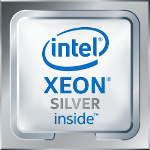
Popular
Intel Xeon 4110 processor 2.1 GHz 11 M...
£903.90
|
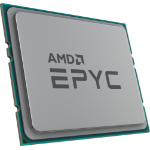
Recommended
AMD EPYC 7402P processor 2.8 GHz 128 M...
£430.75
|
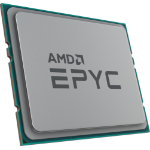 AMD EPYC 7402 processor 2.8 GHz 128 MB...
AMD EPYC 7402 processor 2.8 GHz 128 MB...
£483.74
|
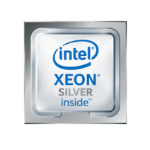
New
HPE Intel Xeon-Silver 4210R processor...
£959.10
|
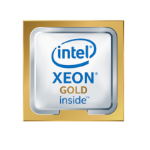 HPE Intel Xeon-Gold 6226R processor 2....
HPE Intel Xeon-Gold 6226R processor 2....
£1,277.05
|
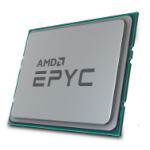
Bestseller
AMD EPYC 7343 processor 3.2 GHz 128 MB...
£483.74
|
|---|---|---|---|---|---|---|
| SKU |
CD8067303561400
|
100-000000048
|
100-000000046
|
P23549-B21
|
P24481-B21
|
100-000000338
|
| Description |
Intel® Trusted Execution Technology
Intel® Trusted Execution Technology for safer computing is a versatile set of hardware extensions to Intel® processors and chipsets that enhance the digital office platform with security capabilities such as measured launch and protected execution. It enables an environment where applications can run within their own space, protected from all other software on the system. Intel® Virtualization Technology for Directed I/O (VT-d) Intel® Virtualization Technology for Directed I/O (VT-d) continues from the existing support for IA-32 (VT-x) and Itanium® processor (VT-i) virtualization adding new support for I/O-device virtualization. Intel VT-d can help end users improve security and reliability of the systems and also improve performance of I/O devices in virtualized environments. Intel® Virtualization Technology (VT-x) Intel® Virtualization Technology (VT-x) allows one hardware platform to function as multiple “virtual” platforms. It offers improved manageability by limiting downtime and maintaining productivity by isolating computing activities into separate partitions. Intel® 64 Intel® 64 architecture delivers 64-bit computing on server, workstation, desktop and mobile platforms when combined with supporting software.¹ Intel 64 architecture improves performance by allowing systems to address more than 4 GB of both virtual and physical memory. Cache CPU Cache is an area of fast memory located on the processor. Intel® Smart Cache refers to the architecture that allows all cores to dynamically share access to the last level cache. Intel® AES New Instructions Intel® AES New Instructions (Intel® AES-NI) are a set of instructions that enable fast and secure data encryption and decryption. AES-NI are valuable for a wide range of cryptographic applications, for example: applications that perform bulk encryption/decryption, authentication, random number generation, and authenticated encryption. Intel® Turbo Boost Technology Intel® Turbo Boost Technology dynamically increases the processor's frequency as needed by taking advantage of thermal and power headroom to give you a burst of speed when you need it, and increased energy efficiency when you don’t. Max Turbo Frequency Max Turbo Frequency is the maximum single-core frequency at which the processor is capable of operating using Intel® Turbo Boost Technology and, if present, Intel® Turbo Boost Max Technology 3.0 and Intel® Thermal Velocity Boost. Frequency is typically measured in gigahertz (GHz), or billion cycles per second. Execute Disable Bit Execute Disable Bit is a hardware-based security feature that can reduce exposure to viruses and malicious-code attacks and prevent harmful software from executing and propagating on the server or network. Intel® Hyper-Threading Technology Intel® Hyper-Threading Technology (Intel® HT Technology) delivers two processing threads per physical core. Highly threaded applications can get more work done in parallel, completing tasks sooner. Intel vPro® Platform Eligibility The Intel vPro® platform is a set of hardware and technologies used to build business computing endpoints with premium performance, built-in security, modern manageability and platform stability. Intel® VT-x with Extended Page Tables (EPT) Intel® VT-x with Extended Page Tables (EPT), also known as Second Level Address Translation (SLAT), provides acceleration for memory intensive virtualized applications. Extended Page Tables in Intel® Virtualization Technology platforms reduces the memory and power overhead costs and increases battery life through hardware optimization of page table management. Intel® Optane™ Memory Supported Intel® Optane™ memory is a revolutionary new class of non-volatile memory that sits in between system memory and storage to accelerate system performance and responsiveness. When combined with the Intel® Rapid Storage Technology Driver, it seamlessly manages multiple tiers of storage while presenting one virtual drive to the OS, ensuring that data frequently used resides on the fastest tier of storage. Intel® Optane™ memory requires specific hardware and software configuration. Enhanced Intel SpeedStep® Technology Enhanced Intel SpeedStep® Technology is an advanced means of enabling high performance while meeting the power-conservation needs of mobile systems. Conventional Intel SpeedStep® Technology switches both voltage and frequency in tandem between high and low levels in response to processor load. Enhanced Intel SpeedStep® Technology builds upon that architecture using design strategies such as Separation between Voltage and Frequency Changes, and Clock Partitioning and Recovery. Intel® Speed Shift Technology Intel® Speed Shift Technology uses hardware-controlled P-states to deliver dramatically quicker responsiveness with single-threaded, transient (short duration) workloads, such as web browsing, by allowing the processor to more quickly select its best operating frequency and voltage for optimal performance and power efficiency. Instruction Set Extensions Instruction Set Extensions are additional instructions which can increase performance when the same operations are performed on multiple data objects. These can include SSE (Streaming SIMD Extensions) and AVX (Advanced Vector Extensions). Intel® Turbo Boost Max Technology 3.0 Intel® Turbo Boost Max Technology 3.0 identifies the best performing core(s) on a processor and provides increased performance on those cores through increasing frequency as needed by taking advantage of power and thermal headroom. Max # of UPI Links Intel® Ultra Path Interconnect (UPI) links are a high speed, point-to-point interconnect bus between the processors, delivering increased bandwidth and performance over Intel® QPI. # of AVX-512 FMA Units Intel® Advanced Vector Extensions 512 (AVX-512), new instruction set extensions, delivering ultra-wide (512-bit) vector operations capabilities, with up to 2 FMAs (Fused Multiply Add instructions), to accelerate performance for your most demanding computational tasks. Intel® Volume Management Device (VMD) Intel® Volume Management Device (VMD) provides a common, robust method of hot plug and LED management for NVMe-based solid state drives. Mode-based Execute Control (MBEC) Mode-based Execute Control can more reliably verify and enforce the integrity of kernel level code. Intel® Transactional Synchronization Extensions Intel® Transactional Synchronization Extensions (Intel® TSX) are a set of instructions that add hardware transactional memory support to improve performance of multi-threaded software. |
2nd Gen AMD EPYC are a new breed of server processors which sets a higher standard for data centers.
Groundbreaking design makes AMD EPYC #1 in performance across industry standard benchmarks, holding 80 world records to date. Performance you can count on to propel your modern data center workloads. ’Hardened at the Core’ protection helps defend against side-channel attacks and EPYC's secure encrypted virtualization features help keep your data safe. The processor’s agility helps you manage new deployments and changing workloads, with the system resources you need, simply and cost-effectively. AMD is the server processor company you can count on for innovation and leadership today and into the future. Performance Leadership Virtually everything runs better on AMD EPYC 7002 Series powered servers. Whether you run enterprise applications, virtualized and cloud computing environments, software-defined infrastructure, high-performance computing, or data analytic applications. EPYC processor-based systems are #1 on industry benchmarks, including those measuring integer, floating-point, virtualization, database, and HPC performance. AMD EPYC 7742 processor has set new world records that establish AMD as THE performance leader. The secret is under the hood AMD Infinity Architecture is a hybrid multi-die architecture that is reaching new heights with AMD EPYC 7002 Series processors. AMD Infinity Architecture now decouples two streams: eight dies for the processor cores, and one I/O die that supports security and communication outside the processor. With the agility to deliver the leading-edge process technology for CPU cores while letting I/O circuitry develop at its own rate, new capabilities can be brought to market faster with EPYC because its die design is not monolithic. This has allowed EPYC to race to leadership in the market and continue to innovate in the future. Forged from the finest silicon AMD is first to market an x86 processor based on 7nm technology. With double the core density and optimizations that improve instructions per cycle, the result is 4x the Floating-Point performance of 1st Gen AMD EPYC. 7nm process technology also brings energy efficiency. 2nd Gen AMD EPYC can provide the same performance at half the power consumption. EPYC by the numbers AMD EPYC has been engineered for data centers that rely on CPU performance. From oil and gas exploration, to in-memory databases, to big data analytics to production rendering to standard data center applications, highly parallel workloads have more cores to work with. AMD EPYC 7002 generation processors scale from 8 to 64 cores (16 to 128 threads per socket). No other x86 vendor today enables such a core density in the market. Be top of the security chain AMD EPYC is ‘Hardened at the Core’ with advanced security features. It is the first server CPU with an integrated and dedicated security processor providing the foundation for Secure Boot, Secure Memory Encryption (SME) and Secure Encrypted Virtualization (SEV). So you can worry less about data risk and focus more on running your business. Enabling software boot without corruption The AMD EPYC processor secure root of trust is designed to validate the initial BIOS software boot without corruption. In virtualized environments, you can cryptographically check that your entire software stack is booted without corruption on a cloud server or services you choose. Restrict internal vulnerabilities With encrypted memory, attacks on the integrity of main memory (such as cold-boot attacks) are inhibited because any data obtained is encrypted. High-performance encryption engines integrated into the memory channels help speed performance. All of this is accomplished without modifications to your application software. Safeguarding virtual and cloud infrastructure 2nd Gen EPYC helps safeguard privacy and integrity by encrypting each virtual machine with one of up to 509 unique encryption keys known only to the processor. This aids in protecting confidentiality of your data even if a malicious virtual machine finds a way into your virtual machine’s memory, or a compromised hypervisor reaches into a guest virtual machine. All-in feature set AMD takes pride in having transparent relationships with its partners and customers. This means having an “all-in” feature set that isn’t contrived to extract higher prices from customers. With AMD EPYC, you have the agility to choose the processor your application requires without worrying about whether an important feature or capability is included. Whatever the number of cores you choose, you’ll have the I/O, memory, and memory bandwidth to accomplish what you need. First-to-market PCIe 4.0 readiness AMD EPYC is the first and only current x86-architecture server processor supporting PCIe 4.06. PCIe 4.0 delivers double the I/O performance over PCIe 3.0. You can use 128 lanes of I/O to double the network bandwidth that ties together HPC clusters and satisfies voracious needs for east-west bandwidth. For other application needs and in virtualized environments, you can connect with higher speed to GPU accelerators, NVMe drives, and you can even use integrated disk controllers to access spinning disks without the typical bottleneck of a PCIe RAID controller. X86 compatibility You can have confidence in AMD EPYC 7002 generation processors because virtually all software will just work. We work with the open source community and major software vendors to help ensure your applications and enabling software will work exceptionally well with EPYC. The broad ecosystem of open tools and libraries are more reasons why top cloud providers such as AWS, Microsoft Azure, Oracle Cloud are providing services to customers based on AMD EPYC processors. 1-Socket EPYC server advantage Traditional CPUs typically must scale up to a 2-socket server to overcome an imbalance of resources. With AMD EPYC, 1-socket servers satisfy most of your workload needs, helping you increase density and reduce capital, power, and cooling expenses. With a 1-socket EPYC server, you can cut licensing costs up to 50% with ‘per-socket software’ such as VMware vSphere or vSAN. |
2nd Gen AMD EPYC are a new breed of server processors which sets a higher standard for data centers.
Groundbreaking design makes AMD EPYC #1 in performance across industry standard benchmarks, holding 80 world records to date. Performance you can count on to propel your modern data center workloads. ’Hardened at the Core’ protection helps defend against side-channel attacks and EPYC's secure encrypted virtualization features help keep your data safe. The processor’s agility helps you manage new deployments and changing workloads, with the system resources you need, simply and cost-effectively. AMD is the server processor company you can count on for innovation and leadership today and into the future. Performance Leadership Virtually everything runs better on AMD EPYC 7002 Series powered servers. Whether you run enterprise applications, virtualized and cloud computing environments, software-defined infrastructure, high-performance computing, or data analytic applications. EPYC processor-based systems are #1 on industry benchmarks, including those measuring integer, floating-point, virtualization, database, and HPC performance. AMD EPYC 7742 processor has set new world records that establish AMD as THE performance leader. The secret is under the hood AMD Infinity Architecture is a hybrid multi-die architecture that is reaching new heights with AMD EPYC 7002 Series processors. AMD Infinity Architecture now decouples two streams: eight dies for the processor cores, and one I/O die that supports security and communication outside the processor. With the agility to deliver the leading-edge process technology for CPU cores while letting I/O circuitry develop at its own rate, new capabilities can be brought to market faster with EPYC because its die design is not monolithic. This has allowed EPYC to race to leadership in the market and continue to innovate in the future. Forged from the finest silicon AMD is first to market an x86 processor based on 7nm technology. With double the core density and optimizations that improve instructions per cycle, the result is 4x the Floating-Point performance of 1st Gen AMD EPYC. 7nm process technology also brings energy efficiency. 2nd Gen AMD EPYC can provide the same performance at half the power consumption. EPYC by the numbers AMD EPYC has been engineered for data centers that rely on CPU performance. From oil and gas exploration, to in-memory databases, to big data analytics to production rendering to standard data center applications, highly parallel workloads have more cores to work with. AMD EPYC 7002 generation processors scale from 8 to 64 cores (16 to 128 threads per socket). No other x86 vendor today enables such a core density in the market. Be top of the security chain AMD EPYC is ‘Hardened at the Core’ with advanced security features. It is the first server CPU with an integrated and dedicated security processor providing the foundation for Secure Boot, Secure Memory Encryption (SME) and Secure Encrypted Virtualization (SEV). So you can worry less about data risk and focus more on running your business. Enabling software boot without corruption The AMD EPYC processor secure root of trust is designed to validate the initial BIOS software boot without corruption. In virtualized environments, you can cryptographically check that your entire software stack is booted without corruption on a cloud server or services you choose. Restrict internal vulnerabilities With encrypted memory, attacks on the integrity of main memory (such as cold-boot attacks) are inhibited because any data obtained is encrypted. High-performance encryption engines integrated into the memory channels help speed performance. All of this is accomplished without modifications to your application software. Safeguarding virtual and cloud infrastructure 2nd Gen EPYC helps safeguard privacy and integrity by encrypting each virtual machine with one of up to 509 unique encryption keys known only to the processor. This aids in protecting confidentiality of your data even if a malicious virtual machine finds a way into your virtual machine’s memory, or a compromised hypervisor reaches into a guest virtual machine. All-in feature set AMD takes pride in having transparent relationships with its partners and customers. This means having an “all-in” feature set that isn’t contrived to extract higher prices from customers. With AMD EPYC, you have the agility to choose the processor your application requires without worrying about whether an important feature or capability is included. Whatever the number of cores you choose, you’ll have the I/O, memory, and memory bandwidth to accomplish what you need. First-to-market PCIe 4.0 readiness AMD EPYC is the first and only current x86-architecture server processor supporting PCIe 4.06. PCIe 4.0 delivers double the I/O performance over PCIe 3.0. You can use 128 lanes of I/O to double the network bandwidth that ties together HPC clusters and satisfies voracious needs for east-west bandwidth. For other application needs and in virtualized environments, you can connect with higher speed to GPU accelerators, NVMe drives, and you can even use integrated disk controllers to access spinning disks without the typical bottleneck of a PCIe RAID controller. X86 compatibility You can have confidence in AMD EPYC 7002 generation processors because virtually all software will just work. We work with the open source community and major software vendors to help ensure your applications and enabling software will work exceptionally well with EPYC. The broad ecosystem of open tools and libraries are more reasons why top cloud providers such as AWS, Microsoft Azure, Oracle Cloud are providing services to customers based on AMD EPYC processors. 1-Socket EPYC server advantage Traditional CPUs typically must scale up to a 2-socket server to overcome an imbalance of resources. With AMD EPYC, 1-socket servers satisfy most of your workload needs, helping you increase density and reduce capital, power, and cooling expenses. With a 1-socket EPYC server, you can cut licensing costs up to 50% with ‘per-socket software’ such as VMware vSphere or vSAN. |
No
|
No
|
No
|
| Short Description |
Intel® Xeon® Silver 4110 Processor (11M Cache, 2.10 GHz)
|
24 Cores, 48 Threads, 2.8GHz, 3.35GHz Boost, 128MB L3 Cache, Socket SP3, 180W
|
24 Cores, 48 Threads, 2.8GHz, 3.35GHz Boost, 128MB L3 Cache, Socket SP3, 180W
|
Intel Xeon-Silver 4210R (2.4GHz/10-core/100W) Processor Kit for ProLiant DL380 Gen10
|
Intel Xeon-Gold 6226R (2.9GHz/16-core/150W) Processor Kit for ProLiant DL360 Gen10
|
16 cores, 32 threads, 3.2 GHz base frequency, 3.9 GHz boost frequency, 128MB L3 cache, 190W TDP
|
| Manufacturer |
Intel
|
AMD
|
AMD
|
HPE
|
HPE
|
AMD
|

